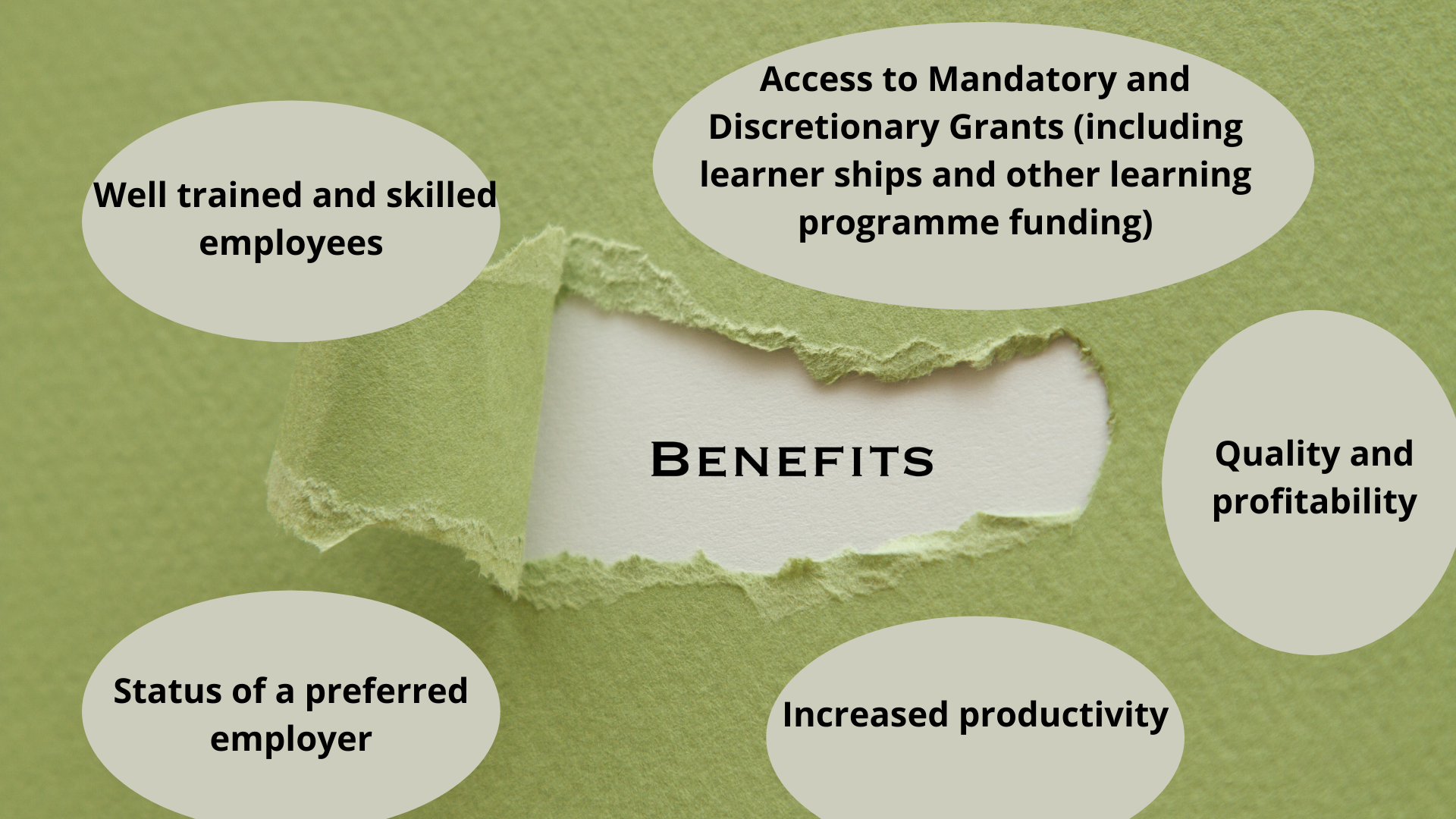Click here to view a video that explains the importance of the Workplace Skills Plan and Annual Training Report in the workplace.
What is a Workplace Skills Plan?
- A Workplace Skills Plan (WSP) is a plan for education and training in the workplace.
- All companies who are registered with a SETA should submit a WSP, which will qualify them for a Mandatory Grant (for levy paying companies only) and the Sector Priority Discretionary Grant (for levy exempt companies only).
- The WSP needs to be submitted for each financial year.
- Every SETA has a template for the completion of the WSP.
Implementing a WSP
The company should keep records of all the training, activities, assessment and/or development initiatives implemented according to the WSP in preparation for the Implementation Report. The most current Workplace Skills Plan/Implementation Report must be used and is accessible through the SETA Skills Development Planning Division.
Training/activities/assessments that have taken place during the year need to be tracked and training/activities/assessments that still need to be completed also need to be tracked.
The Implementation Report must list all the interventions that have been implemented according to the WSP. If training or other initiatives planned in the WSP were not completed, justification for this should be recorded.
Resources required for the planning and implementation of the WSP include:
- Financial resources to pay for training, including mandatory and discretionary grants.
- Information resources to access training courses and service providers.
- Information resources to monitor national and sectoral trends.
- Information and communication resources to monitor organisational needs.
- Human resources to monitor the achievement of goals, carry out action steps and deal with problems.
- Time resources to carry out the action steps.
- Record-keeping resources to control the implementation of the workplace skills plan.
Objectives and Action Steps
|
Objective |
Action Steps |
|
Gather information about national and sectoral trends |
|
|
Gather information about the business plans and other objectives of the organisation |
|
|
Gather information on employee priorities |
|
|
Gather information on competence and performance gaps |
|
|
Consult with management |
|
|
Compile draft WSP |
|
|
Consult with management |
|
|
Compile final WSP for submission |
|
What are the Benefits of Completing a WSP?
- Well trained and skilled employees
- Status of a preferred employer
- Increased productivity
- Quality and profitability
- Access to Mandatory and Discretionary Grants (including learner ships and other learning programme funding)

Keeping Record
The SDF should ensure that records are kept of all activities that took place during the development of the WSP of the organisation:
- Documentation related to registration with SARS for SDL purposes (EMP 101 and EMP 103).
- Training committee member details, minutes of meetings, agendas and any correspondence with members.
- SDF registration documentation and correspondence with the SETA in this regard.
- Guidelines provided by the SETA on how to develop the WSP.
- The Sector Skills Plan.
- All information collected during the skills audit.
- Organisational skills priorities.
- Information provided by accredited training providers.
- The training budget.
- The WSP that was submitted to the SETA.
- Grant applications (if any) and related correspondence.